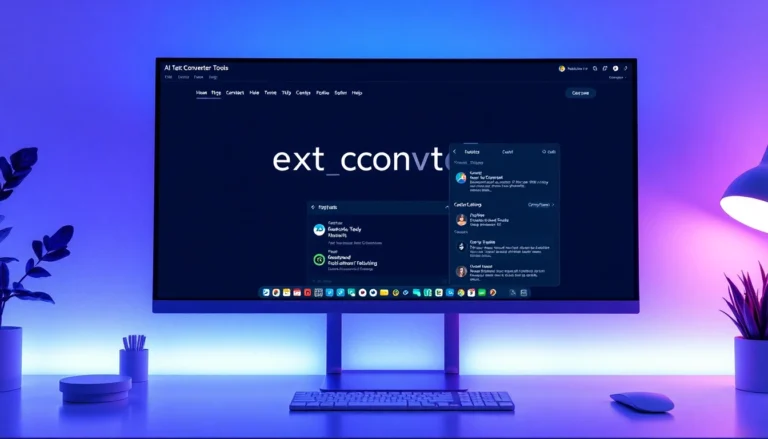
In the rapidly evolving world of mobile applications, staying current with industry updates is crucial for developers, marketers, and business leaders alike. As technologies advance and user preferences shift, understanding the latest trends and strategic responses has become essential to maintain competitiveness and growth. For those seeking comprehensive and insightful insights into the current app industry landscape, exploring detailed App Industry Updates can provide a solid foundation for informed decision-making. This article delves deep into the prevailing trends, strategic adaptations, and future directions shaping the app ecosystem in 2024 and beyond.
Understanding the Current Landscape of App Industry Updates
Key trends shaping mobile app development in 2024
In 2024, mobile app development continues to be driven by innovations that prioritize user-centric design, speed, and personalized experiences. Artificial Intelligence (AI) and Machine Learning (ML) are becoming integral, enabling apps to offer smarter features such as predictive analytics, voice recognition, and contextual suggestions. Additionally, cross-platform development frameworks like Flutter and React Native are gaining prominence, reducing time-to-market and ensuring consistent user experiences across devices.
Another pivotal trend is the rise of progressive web apps (PWAs), which provide app-like experiences via browsers, reducing development costs and improving accessibility. Moreover, privacy-centric design, influenced by evolving Regulations like GDPR and CCPA, mandates that apps incorporate transparent data policies and robust security measures to ensure user trust.
Major shifts in user preferences and behavior
User behavior in 2024 reflects a demand for seamless, personalized experiences with instant gratification. There’s an increasing preference for quick, intuitive interfaces, and apps that offer meaningful engagement through gamification, social integration, and virtual/augmented reality features. Users are also more inclined toward apps that respect their privacy, showcasing distrust toward intrusive data collection practices.
Moreover, demographics influence app preferences: younger users gravitate toward social media-centric and entertainment apps, while enterprise users demand productivity and collaboration tools. The focus on accessibility has also gained momentum, with apps adapting to diverse user needs, including those with disabilities.
Impact of emerging technologies on app innovation
Emerging technologies are dramatically transforming app innovation. AI-driven chatbots enhance customer service, while ML models personalize content delivery, boosting engagement and retention. Augmented Reality (AR) and Virtual Reality (VR) have expanded beyond gaming into retail, real estate, and education, offering immersive experiences that redefine user interaction.
Blockchain technology is increasingly influencing app security and transactions, especially within finance and healthcare apps, by ensuring transparent and tamper-proof records. Edge computing supports real-time data processing with minimal latency, crucial for IoT-connected applications. Collectively, these innovations enable developers to craft more intelligent, secure, and engaging apps that meet the complex demands of modern users.
Analyzing Competitor Strategies and Industry Movements
How top apps are adapting to recent updates
Leading apps are proactively evolving by integrating new features aligned with industry trends. For example, social media giants have incorporated AR filters and video-centric updates to enhance engagement. Streaming platforms utilize AI algorithms to personalize content and improve recommendation accuracy. These adaptations not only attract new users but also increase retention by enriching the user experience.
Furthermore, top performers adopt iterative update cycles, using user feedback and analytics to refine functionalities continuously. They also prioritize performance optimization, such as reducing load times and minimizing app size, to cater to users on a variety of devices and network conditions.
Case studies of successful app launches and revamps
One notable case is the rebranding of a fitness app that adopted AI-driven personal coaching, gamification, and seamless integrations with wearables. This strategic overhaul resulted in a 40% increase in active users within six months. Another example is a retail app that revamped its UI based on user testing, enhanced checkout security, and added AR features for virtual try-ons—leading to a 25% increase in conversion rates. These cases exemplify how data-driven updates and technology integrations yield tangible growth.
Lessons drawn from industry leaders’ approach to app updates
Industry leaders demonstrate that successful app updates hinge on thorough user research, rigorous testing, and strategic rollout plans. Prioritizing user feedback ensures updates address actual pain points, while phased deployments minimize risks. Transparency about updates and clear communication fosters user trust and encourages adoption. Additionally, maintaining high performance standards during updates is vital to prevent user churn and sustain engagement.
Implementing Effective App Industry Updates in Your Business
Best practices for integrating new features and updates
To ensure smooth integration, developers should adopt agile methodologies, allowing incremental releases and continuous feedback collection. Conducting thorough beta testing helps identify bugs and user experience issues beforehand. Clear documentation and user tutorials facilitate transition and maximize feature adoption. Prioritizing update frequency based on user needs and industry standards keeps your app relevant and competitive.
Incorporating feedback loops, such as app reviews and analytics, guides feature refinement, ensuring updates align with user expectations.
Optimizing app performance post-update
Post-update optimization involves monitoring key performance indicators (KPIs) like load times, crash rates, and user engagement metrics. Utilizing performance profiling tools enables pinpointing bottlenecks. Conducting A/B testing helps determine which updates drive engagement. Regular maintenance, including database optimization and code refactoring, ensures stability and responsiveness, critical for user retention.
Ensuring seamless user experience and retention
User experience remains paramount; simplifying interfaces, reducing friction, and offering personalized content foster loyalty. Implementing in-app tutorials for new features minimizes confusion and encourages exploration. Regular communication through push notifications or emails about new features keeps users engaged. In-app support and feedback channels also help swiftly resolve issues and demonstrate responsiveness, building trust.
Measuring Success and Future Trends in App Industry Updates
Key performance metrics to track after updates
Effective assessment requires monitoring metrics such as Daily Active Users (DAU), User Retention Rate, Average Session Duration, and Conversion Rate. App Store Ratings and reviews provide qualitative insights. Churn rate analysis reveals potential issues requiring attention. Tracking crash reports and load times ensures performance standards are maintained. These data points help evaluate the impact of updates and guide future improvements.
Anticipating upcoming changes in app industry standards
Looking ahead, industry standards will increasingly emphasize privacy, security, and energy efficiency. Privacy-by-design approaches will dominate, and compliance with evolving regulations will be mandatory. Voice interface integration is expected to become ubiquitous, demanding new UI/UX considerations. Additionally, standards around accessibility and inclusivity will intensify, necessitating that apps cater to diverse user needs.
Preparing your app for continuous evolution in 2024 and beyond
Preparation involves fostering a flexible development environment that can quickly adapt to changes. Investing in scalable infrastructure, data analytics capabilities, and skilled talent is crucial. Building a strong feedback ecosystem with users facilitates continual refinement. Establishing strategic partnerships with emerging technology providers can also accelerate innovation. Proactively monitoring industry trends ensures your app remains at the forefront of technological advancements.
Regulatory and Security Considerations in App Industry Updates
Staying compliant with global data privacy laws
Global data privacy compliance is multifaceted, requiring adherence to regulations such as GDPR, CCPA, and others depending on the target market. Implementing privacy policies, obtaining user consent explicitly, and providing transparent data handling practices are fundamental. Incorporating privacy dashboards and allowing users to control their data enhances trust and legal compliance.
Implementing robust security measures during updates
Security must be integrated into every stage of development. Techniques include encryption, secure APIs, regular vulnerability assessments, and multi-factor authentication. During updates, code reviews and security testing help identify potential weaknesses. Implementing automated security scans and adopting a DevSecOps approach ensures that security remains robust amidst frequent changes.
Mitigating risks associated with frequent app modifications
Frequent updates can introduce stability issues or compatibility problems. To mitigate these risks, maintain comprehensive version control, conduct extensive testing, and establish rollback procedures. Clear communication with users about upcoming changes and downtime minimizes frustration. Additionally, maintaining rigorous documentation helps track modifications and troubleshoot issues efficiently.





